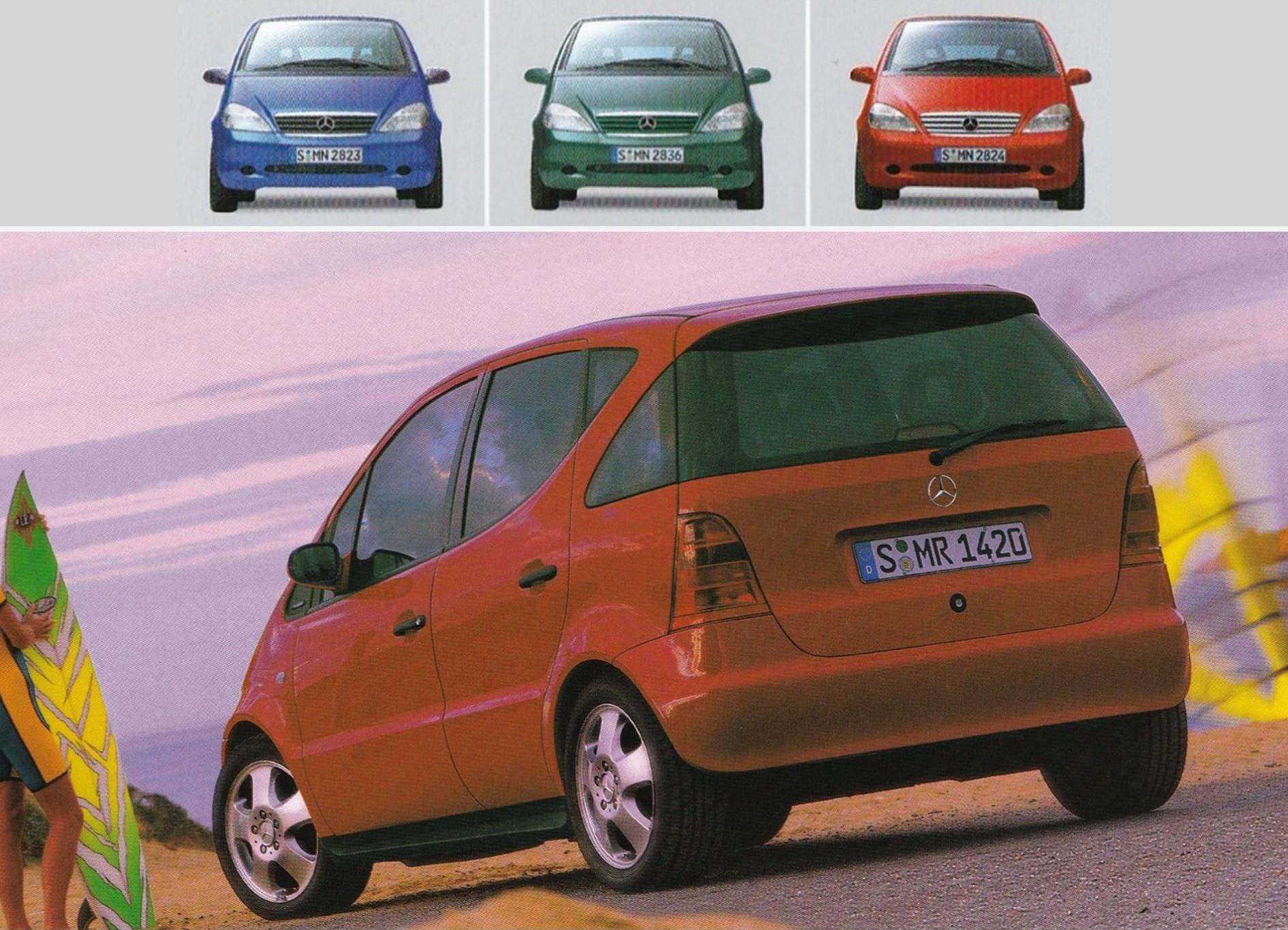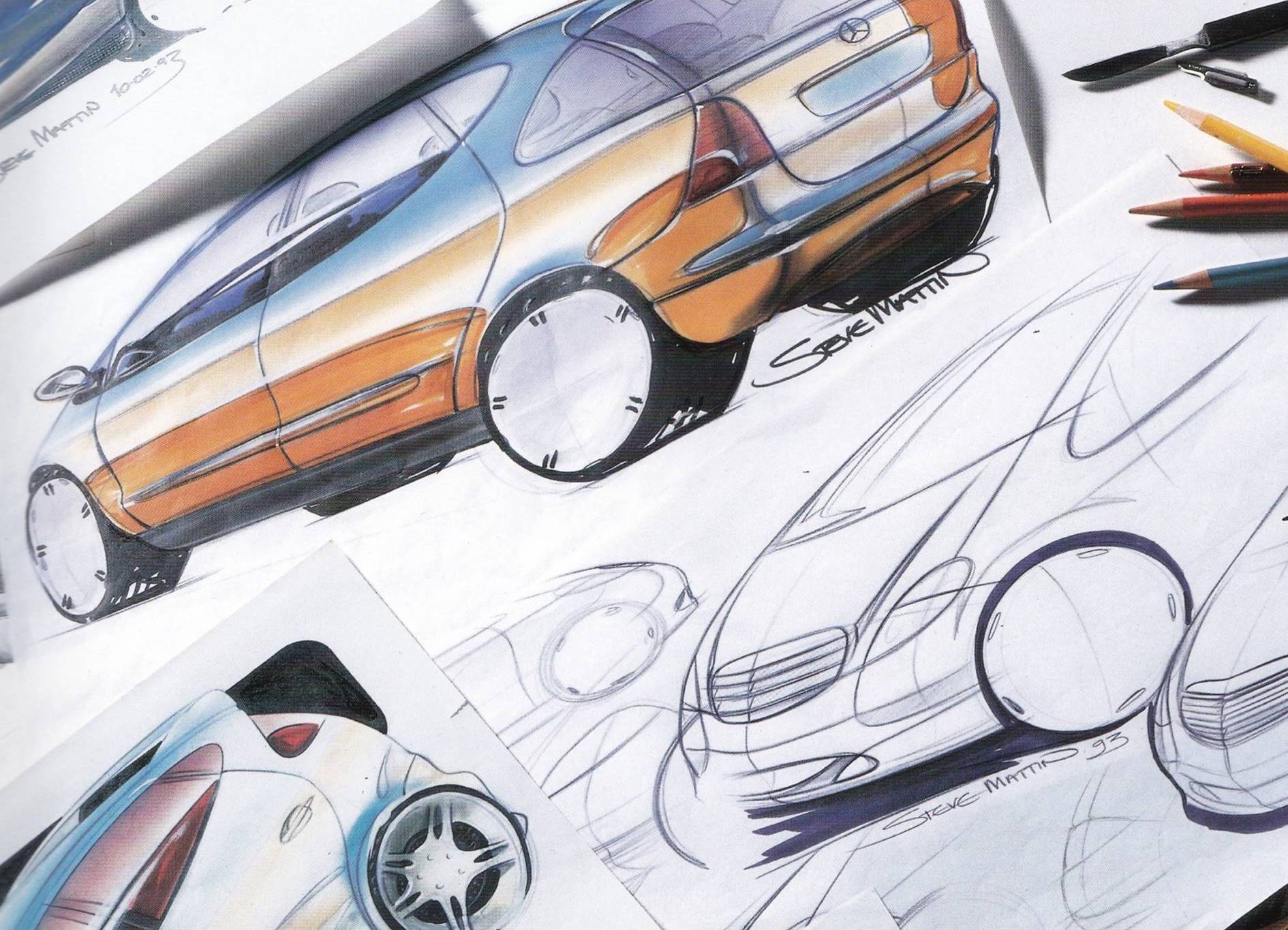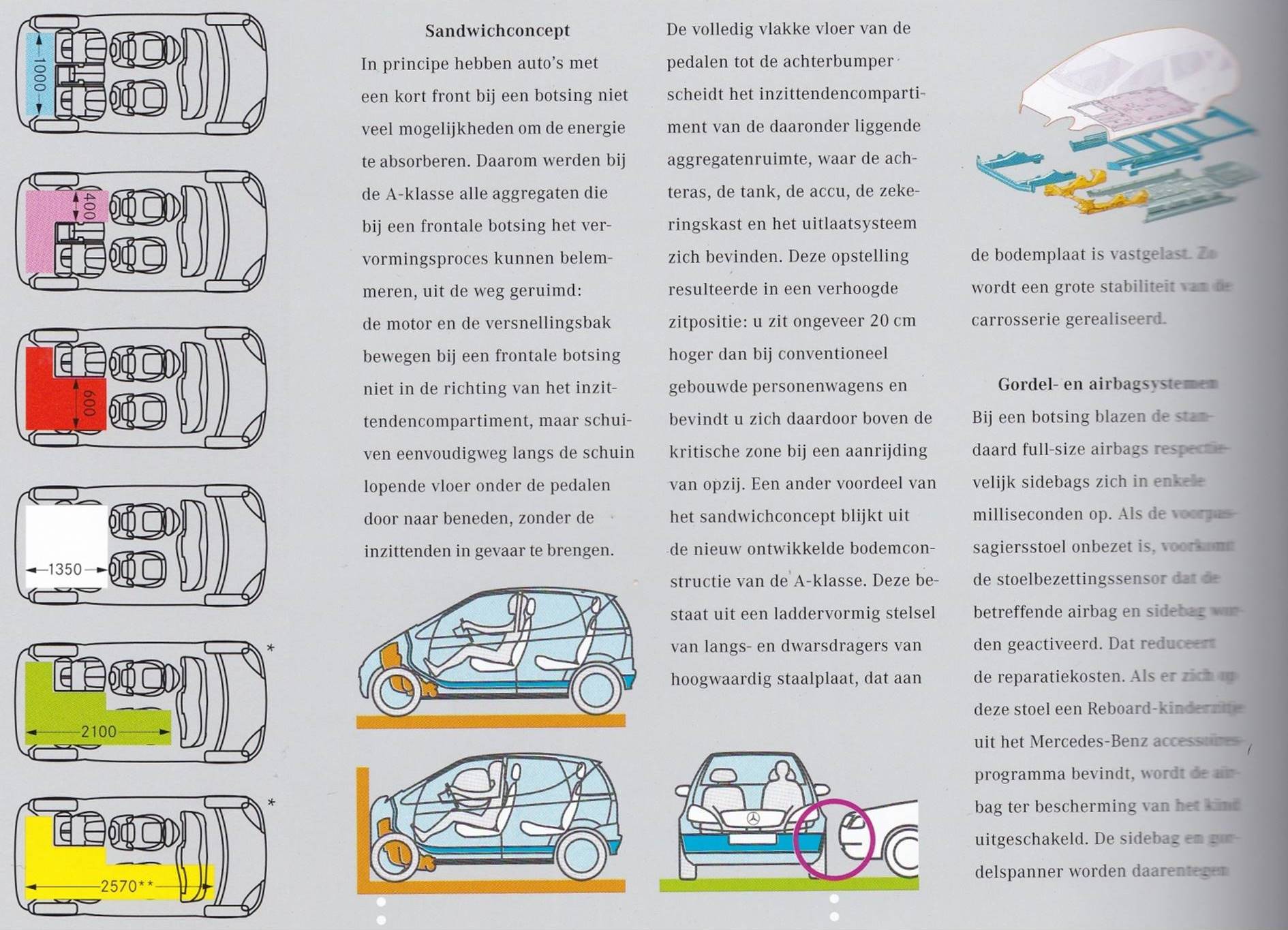MY CLASSICS
Mercedes-Benz A-Class
Cars
| 20-03-2020
In 1997 Mercedes-Benz introduced a groundbreaking new car, especially for a traditional brand like Mercedes. I already thought the 1993 Study-A was a very nice car, but when I read about the concept of the A-Class, I was really triggered.

As a boy I occasionally went to car dealers in the village to ask for folders. Nowadays there are almost no brand dealers in villages anymore, but at the time we had representatives of no less than five car brands in our town. With some you got almost nothing because they didn't see you as a customer, but others had more foresight and did their best for you. The salesman at the local Peugeot dealer even dug up a poster of a 205 for me – that poster has been hanging in my bedroom for years.
A few years later, when I was in secondary education, the internet started to emerge. This opened up a whole new world for me: requesting folders online. My collection of brochures therefore continued to expand, until a move was imminent and I decided to keep only the most special copies. Which I of course regret now... Although, it also gives a nice insight into what I considered to be 'special' at the time. In addition to grande routières such as the Citroën C6, Lancia Thesis and Renault Vel Satis there are remarkably much monovolumes in it. I liked that kind of smart concept and saw it as a challenge.

An excellent example of a smart spacial concept is the first Mercedes-Benz A-Class. So I kept the brochure of that car and I got it out for writing this piece. The marketing people nicely summarize what makes this car special, with some exaggeration of course: “The A-class is the answer to new wishes and needs. In short, our “commitment” to the new generation. We've created a completely new category of cars that combines features that seemed incompatible so far: the A-Class is 3.57 meters short, but just as comfortable as a mid-range Limousine and as variable as a small space vehicle. In particular due to its high safety level, it earns the Star on the grille. Behind this lies a groundbreaking idea: the sandwich concept with its innovative space and safety principle. The Electronic Stability Program ESP® is also a milestone in the field of active safety.” (The original text is in Dutch.)
The elk in the room
Before I tell you why the concept of the A-Class appealed to me so much, I have to discuss the elephant in the room - or rather: the elk. In a test in which a sudden evasive maneuver is made (as if you have to steer around a suddenly crossing elk - hence the name 'elk test'), the newly introduced A-Class came off the ground with a few wheels and could fall over. That was then further enlarged by some car journalists, and as a result Mercedes-Benz was in danger of huge damage to its image. To limit the damage as much as possible, action was taken quickly: the brand apologized publicly, fitted other tires and from that moment provided ESP with every A-Class as standard. My brochure, from which I quoted above, is therefore from after the elk test.

The fact that the A-Class got adverse media coverage was of course already painful for Mercedes-Benz anyway, but that the reason for this was a safety issue made it extra painful. With the 'Baby-Benz', Mercedes launched a car that had a smart safety concept as a unique selling point. The Germans called their idea the 'sandwich concept'. In short, this means that the car has a double bottom and an engine block that is mounted at such an angle that it slides under the passenger compartment in a frontal collision. That way you can design a car with a very short bonnet, without sacrificing the safety of the occupants in the event of a collision. A shorter bonnet means that a larger percentage of the car length is available to the passengers. Simply put: you can make a small car with the interior space of a large(r) car. An extra advantage of the double bottom is that it creates a flat floor inside the car, so that everyone has enough leg room, and because the car is a bit higher, you do not have to bend as much when getting in. I thought that sandwich bottom was a great idea, especially because I envisioned combinations with other clever concepts such as the Renault Mégane Scénic and some of the cars I'm going to discuss in the coming weeks.


Mercedes-Benz A-Class. At the top from left to right as Classic, Elegance and Avantgarde
Car brochuresAs a boy I occasionally went to car dealers in the village to ask for folders. Nowadays there are almost no brand dealers in villages anymore, but at the time we had representatives of no less than five car brands in our town. With some you got almost nothing because they didn't see you as a customer, but others had more foresight and did their best for you. The salesman at the local Peugeot dealer even dug up a poster of a 205 for me – that poster has been hanging in my bedroom for years.
A few years later, when I was in secondary education, the internet started to emerge. This opened up a whole new world for me: requesting folders online. My collection of brochures therefore continued to expand, until a move was imminent and I decided to keep only the most special copies. Which I of course regret now... Although, it also gives a nice insight into what I considered to be 'special' at the time. In addition to grande routières such as the Citroën C6, Lancia Thesis and Renault Vel Satis there are remarkably much monovolumes in it. I liked that kind of smart concept and saw it as a challenge.

Beautiful sketches for the A-Class – on paper!
Smart StarAn excellent example of a smart spacial concept is the first Mercedes-Benz A-Class. So I kept the brochure of that car and I got it out for writing this piece. The marketing people nicely summarize what makes this car special, with some exaggeration of course: “The A-class is the answer to new wishes and needs. In short, our “commitment” to the new generation. We've created a completely new category of cars that combines features that seemed incompatible so far: the A-Class is 3.57 meters short, but just as comfortable as a mid-range Limousine and as variable as a small space vehicle. In particular due to its high safety level, it earns the Star on the grille. Behind this lies a groundbreaking idea: the sandwich concept with its innovative space and safety principle. The Electronic Stability Program ESP® is also a milestone in the field of active safety.” (The original text is in Dutch.)
The elk in the room
Before I tell you why the concept of the A-Class appealed to me so much, I have to discuss the elephant in the room - or rather: the elk. In a test in which a sudden evasive maneuver is made (as if you have to steer around a suddenly crossing elk - hence the name 'elk test'), the newly introduced A-Class came off the ground with a few wheels and could fall over. That was then further enlarged by some car journalists, and as a result Mercedes-Benz was in danger of huge damage to its image. To limit the damage as much as possible, action was taken quickly: the brand apologized publicly, fitted other tires and from that moment provided ESP with every A-Class as standard. My brochure, from which I quoted above, is therefore from after the elk test.

From the brochure: the advantages of the sandwich concept
Sandwich bottomThe fact that the A-Class got adverse media coverage was of course already painful for Mercedes-Benz anyway, but that the reason for this was a safety issue made it extra painful. With the 'Baby-Benz', Mercedes launched a car that had a smart safety concept as a unique selling point. The Germans called their idea the 'sandwich concept'. In short, this means that the car has a double bottom and an engine block that is mounted at such an angle that it slides under the passenger compartment in a frontal collision. That way you can design a car with a very short bonnet, without sacrificing the safety of the occupants in the event of a collision. A shorter bonnet means that a larger percentage of the car length is available to the passengers. Simply put: you can make a small car with the interior space of a large(r) car. An extra advantage of the double bottom is that it creates a flat floor inside the car, so that everyone has enough leg room, and because the car is a bit higher, you do not have to bend as much when getting in. I thought that sandwich bottom was a great idea, especially because I envisioned combinations with other clever concepts such as the Renault Mégane Scénic and some of the cars I'm going to discuss in the coming weeks.

The A-Class compared to the C-Class: a small car with the space of a large(r) one
MY CLASSICS
In the My classics section, I add a model to my digital collection of classics every other week. For that, I select cars whose design appeals to me or evokes memories. So nostalgia, and very subjective. Hence the section title: my classics.
Sources
- Dutch brochure about the Mercedes-Benz A-Class (Daimler-Benz Aktiengesellschaft, Stuttgart; VP/KW 6701 ∙ 1403 ∙ 07-02/0898).
- The images are composed of scans of the above-mentioned brochure. For the bottom image I also used a brochure about the C-Class (Daimler-Benz Aktiengesellschaft, Stuttgart; VP/MKW 6701 ∙ 0009 ∙ 07-05/0894), via autoweek.nl
